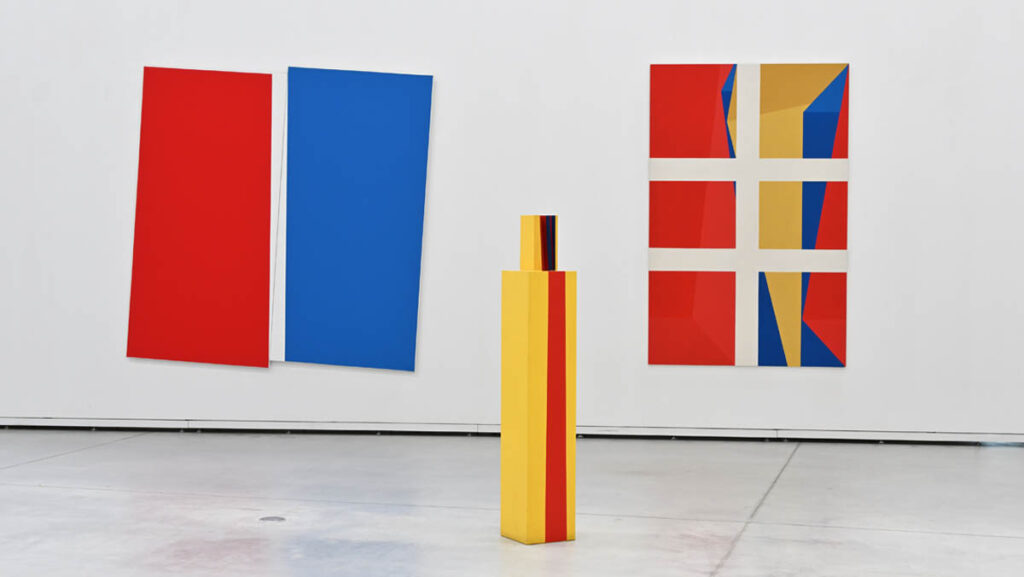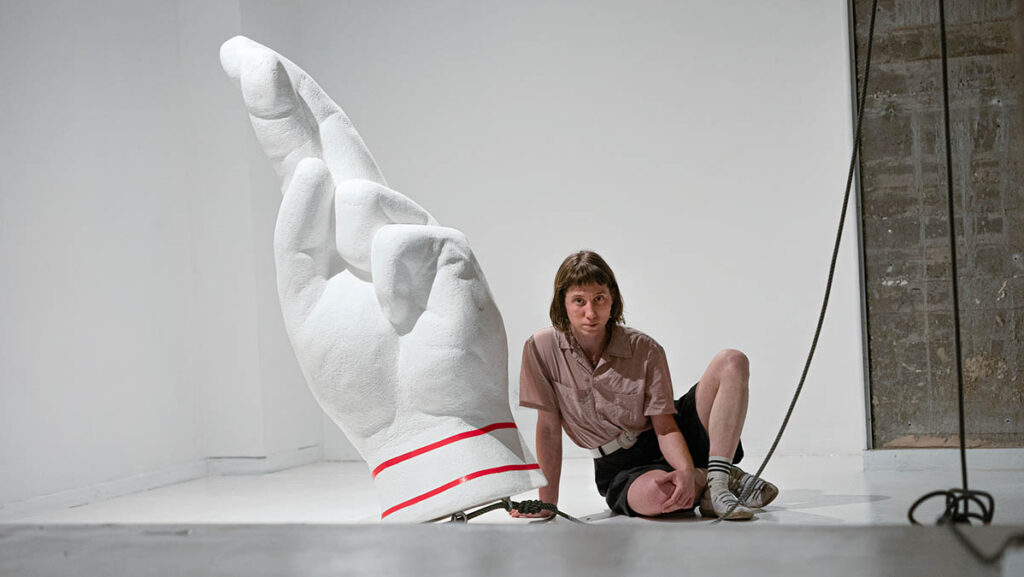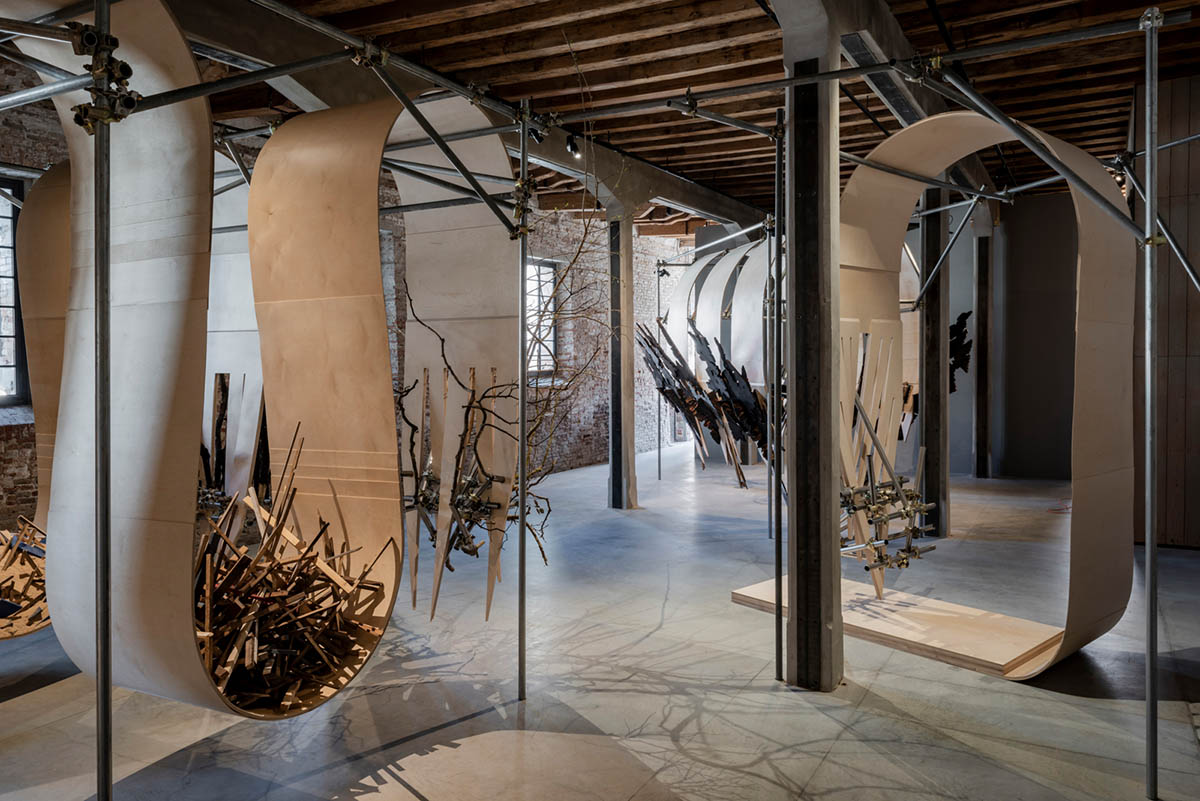
Lamothe’s proposed spaces weave, combine, and connect materials to create new spatial, formal, and aesthetic possibilities that suggest alternative ways of living: strange, supportive, and symbiotic. In an interview with artist Luciana Lamothe and curator Sofia Dourron, we gain insight into the process behind this exhibition.
When did you first hear that you would be representing Argentina at the 60th La Biennale di Venezia in 2024? What was your reaction? Who was the first person you told it to?
Luciana Lamothe: Paula Vázquez, the then Director of Cultural Affairs of the Ministry of Foreign Affairs, called me and told me that they had selected me. I was shocked, but deep down, I was very confident that they would choose my project. When they called me, I was with my girlfriend, so she was the first person to find out.
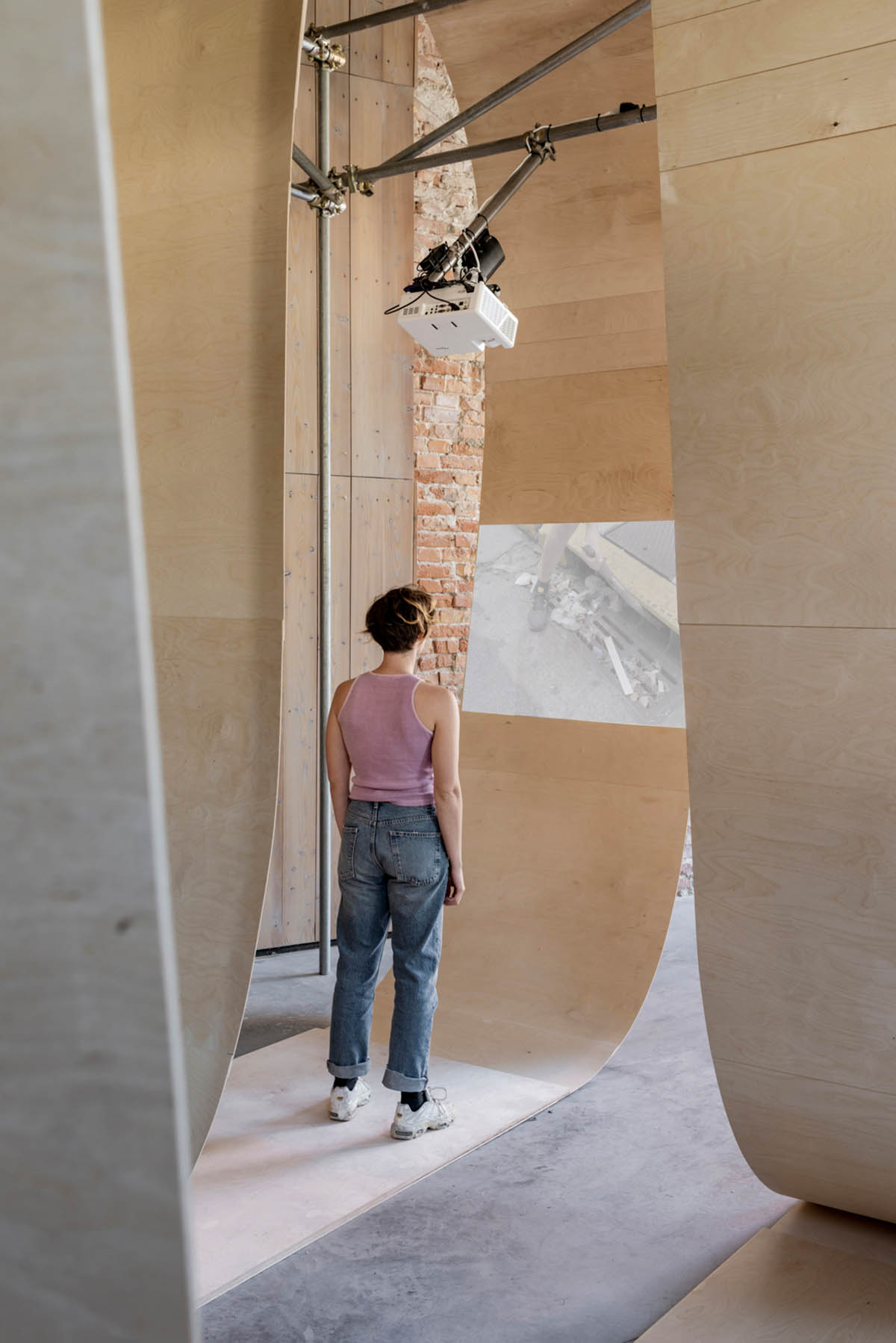
What drew you to Luciana Lamothe’s work for this exhibition?
Sofia Dourron: Last year, Luciana and I started talking about doing a project together, and when the open call for the pavilion was announced, it seemed like a good opportunity to at least start developing a project. The pavilion itself is not an easy space to work with, and Luciana’s work can engage with space and architecture in a way that not only integrates it into the installation but also questions some of its most basic premises. It was an immense joy to be selected, and it was a great opportunity to work together.
What motivated you to create the site-specific installation ‚Hope the Doors Collapse‘?
LL: I wanted to create a large immersive installation that combines architecture, sculpture, and video. The project then proposes several questions. Mainly, questions about how we relate to the environment, its materialities, and its spatialities. In that sense, it is valuable to interrogate the body and its place in that great ecosystem. What is the scale relationship between the elements that occupy a space, and what does scale mean? I’m interested in looking at the different ways in which the elements affect each other and how they affect the bodies that walk through the installation. I’ve been developing many of these ideas since my early work. Furthermore, in recent years, especially since the pandemic, I have begun to take a more careful interest in space as an environment and as a place in which an interaction is established: how it affects us and how we affect the environment.
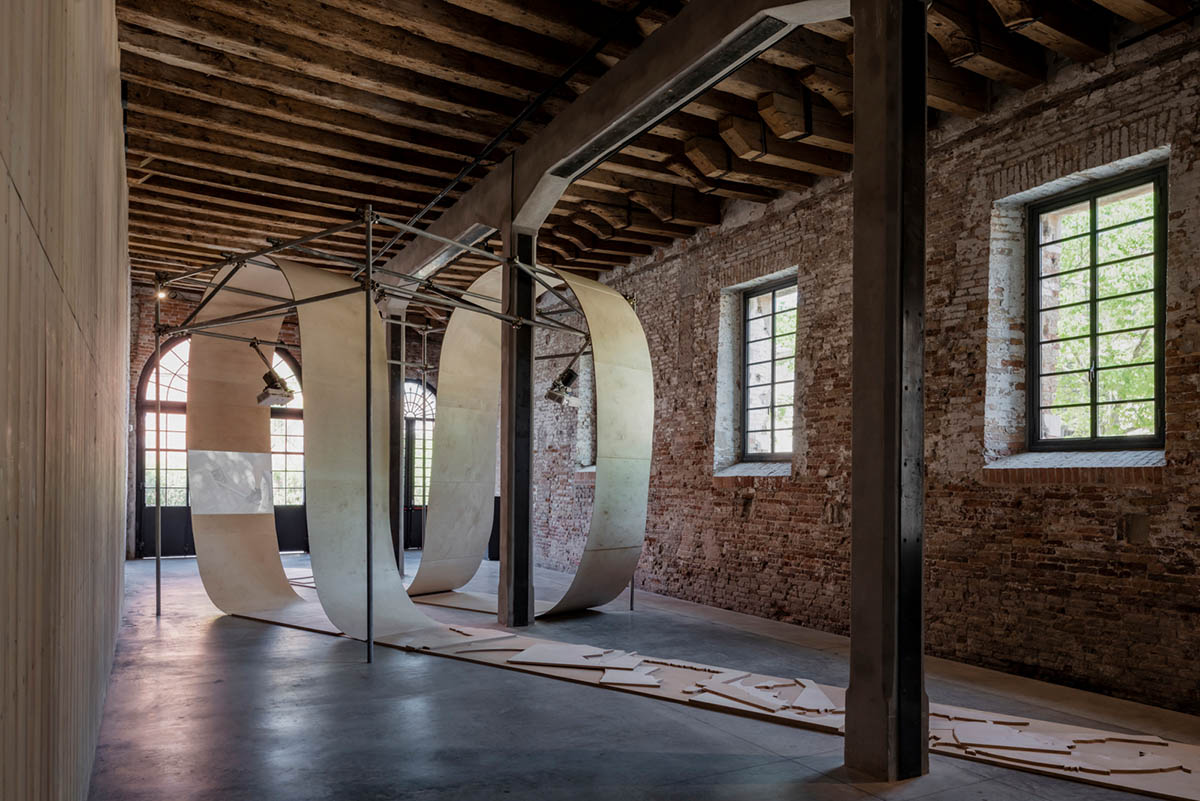
Could you explain the materials you chose for this installation and how they served symbolic or practical purposes?
LL: I was interested in reflecting on the possible states in which materials can manifest themselves. For example, wood and all the uses and states in which it can appear in culture. From the functional point of view, as furniture or tool, and from the natural point of view, as a tree or dead wood, as waste or charcoal, etc.
I have a special fascination for industrial materials and the world of construction. For example, scaffolding, boards, or wooden slats. I am interested in confronting its rusticity and robustness with the ideas of softness, flexibility, and malleability. I’ve been interested in generating questions about the possibilities of transforming the material in order to question architecture and the spaces that surround us, that is, those spaces that we design to live in and that configure us as a society.
My intention is always to test the material, its resistance, and its own power. That is where shapes and spaces are generated. In other words, space and shapes are a product of the particular characteristics of the materials. The weight, but also the thickness and, of course, gravity. In my walkable works, it is the weight of the body that generates the bending, the curve. Checks and balances generate a system of collaboration between the parts; if one element is missing, the system fails.
Tell me more about the process of developing this installation, from concept to realization. How do these different mediums inform each other in your work?
It’s difficult to think that one thing comes after the other. For me, the concept and the realization are part of the same thing. I don’t conceive of the idea as separate from the work.
Was this your first collaboration with Luciana Lamothe?
SD: Yes, it was. We had never worked together before, and that implies some risks, but I think the whole project was about taking risks, and, ultimately, it paid off.
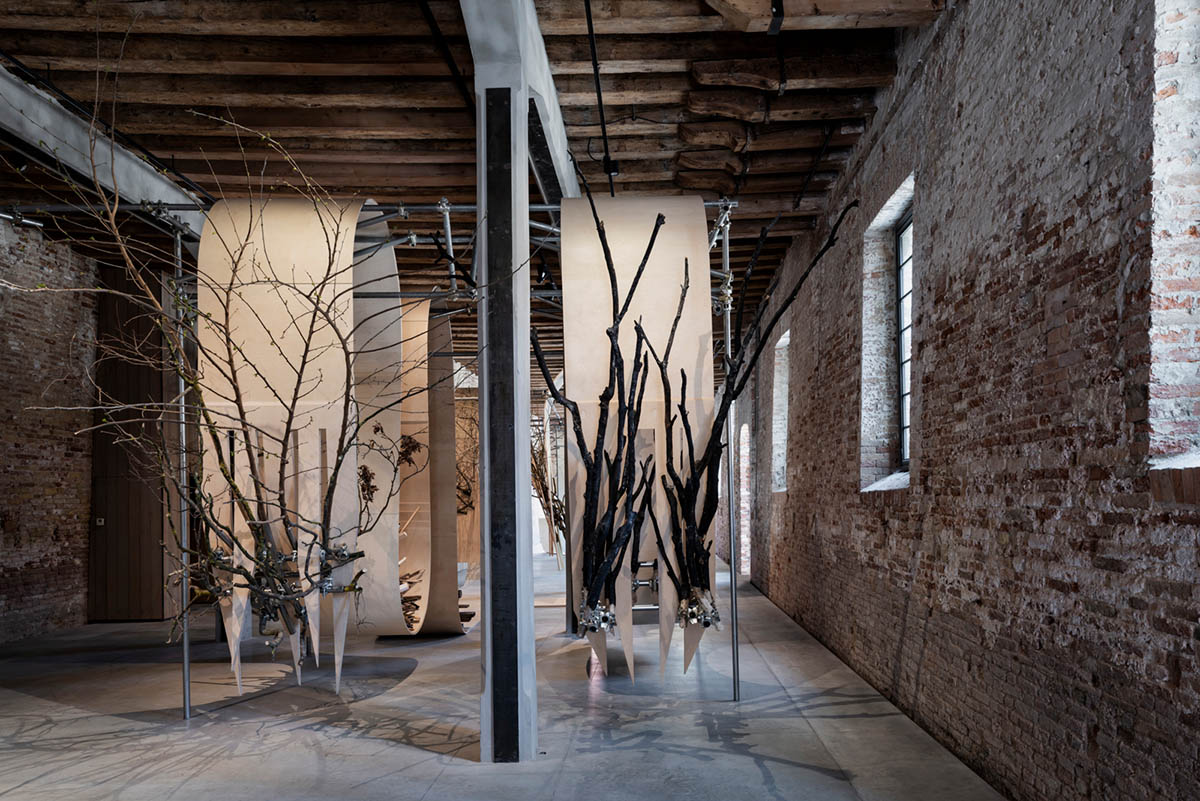
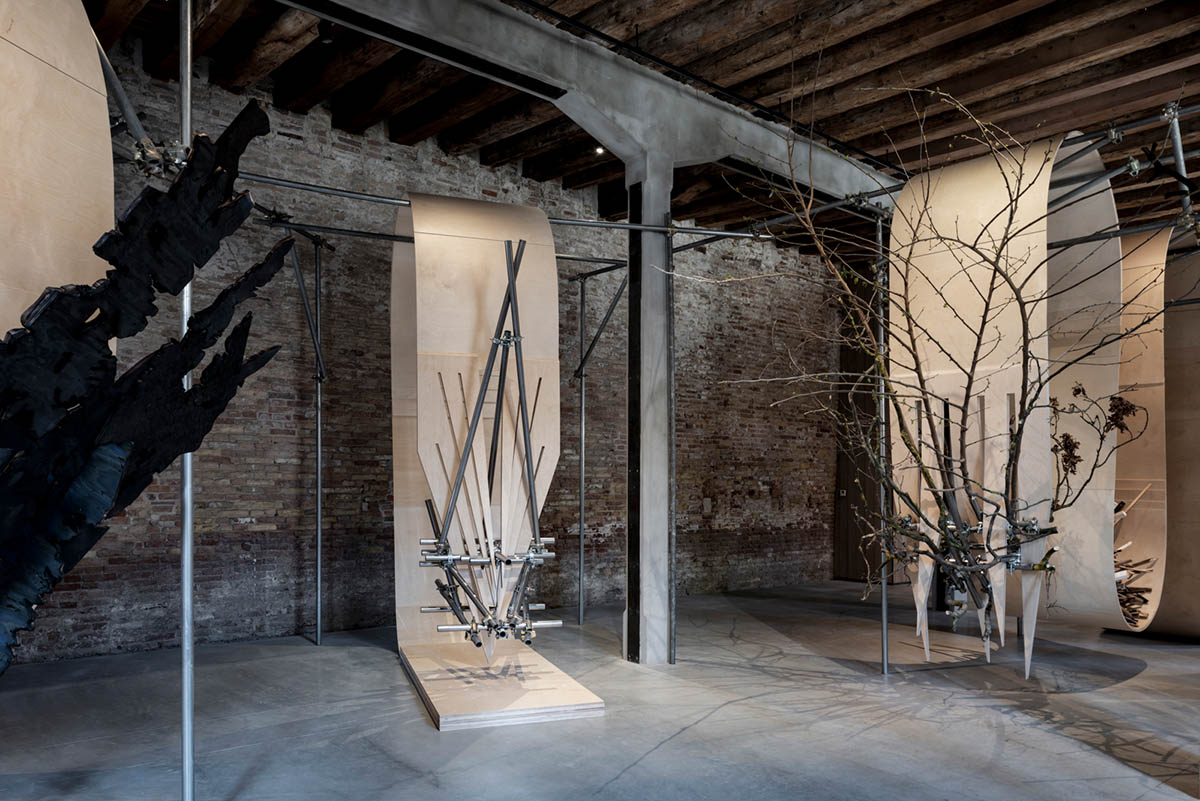
How would you describe the creation process from your perspective?
SD: From a curatorial standpoint, the creation process changes from project to project, depending on its characteristics and the needs of the artists you work with. In this case, it started with selecting the right project for the open call and developing the conceptual framework, while also working with Luciana on the conception of the work, thinking about how to deal with the space, finding the right materials, and letting the work expand as new information arrived. It involved a lot of conversations about the direction of the work, but also a recap of a practice she has developed over the last 20 years.
How do you integrate ecological thinking into your research and curatorial projects? How does it play a role in this one?
SD: A lot of my practice these days approaches environmental thinking from the perspective of the colonial separation between culture and nature, between humans and non-humans, and the extractivist paradigm that mediates between the terms. Using art as a speculative tool, the works gathered in these exhibitions enunciate universes that move from ecocide to a sensual and fabulous ecophilia, deploy multispecies strategies for survival, and thus project us towards other futures, if not utopian, at least more optimistic. However, it also has an impact on the way the projects are developed and produced. In the case of the Argentina Pavilion in Venice, we decided to produce the whole work on-site with local materials, for practical, conceptual, and environmental reasons.
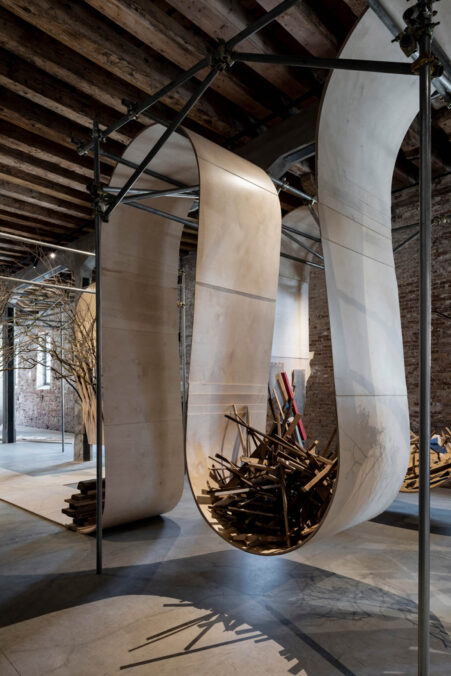
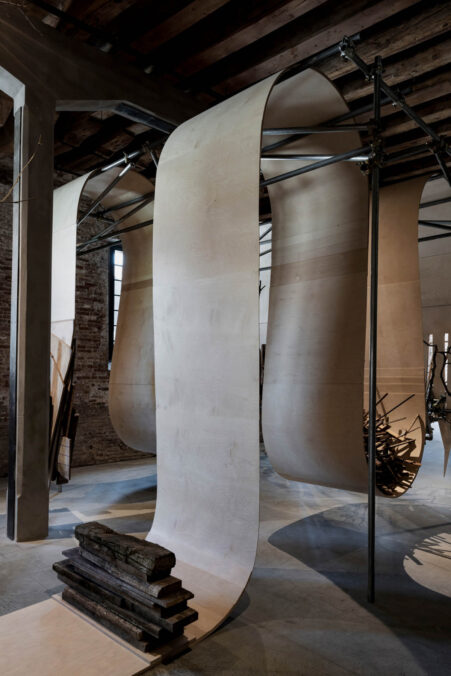
What is the significance of the cuts, slashes, assemblages, and twists in your work?
LL: In my first work, I began to develop the tools to take a leading role. I took my tools out of my workshop, put them in public spaces, and put them to use in different places. With the craft knife, I cut up hotel armchairs or movie theater seats; with the screwdriver, I removed door handles, for example. It showed me how the use of the tool outside its context became a destructive action. I thought about the functionality and context from the constructive or destructive possibilities of the tools. This idea about the ambiguity of tools runs through all my work. That’s how the destructive act becomes constructive. A welder used at maximum power pierces the metal, melts it, and no longer welds, but that material goes through a transformation in its consistency and shape and no longer returns to what it was before the impact of that machine.
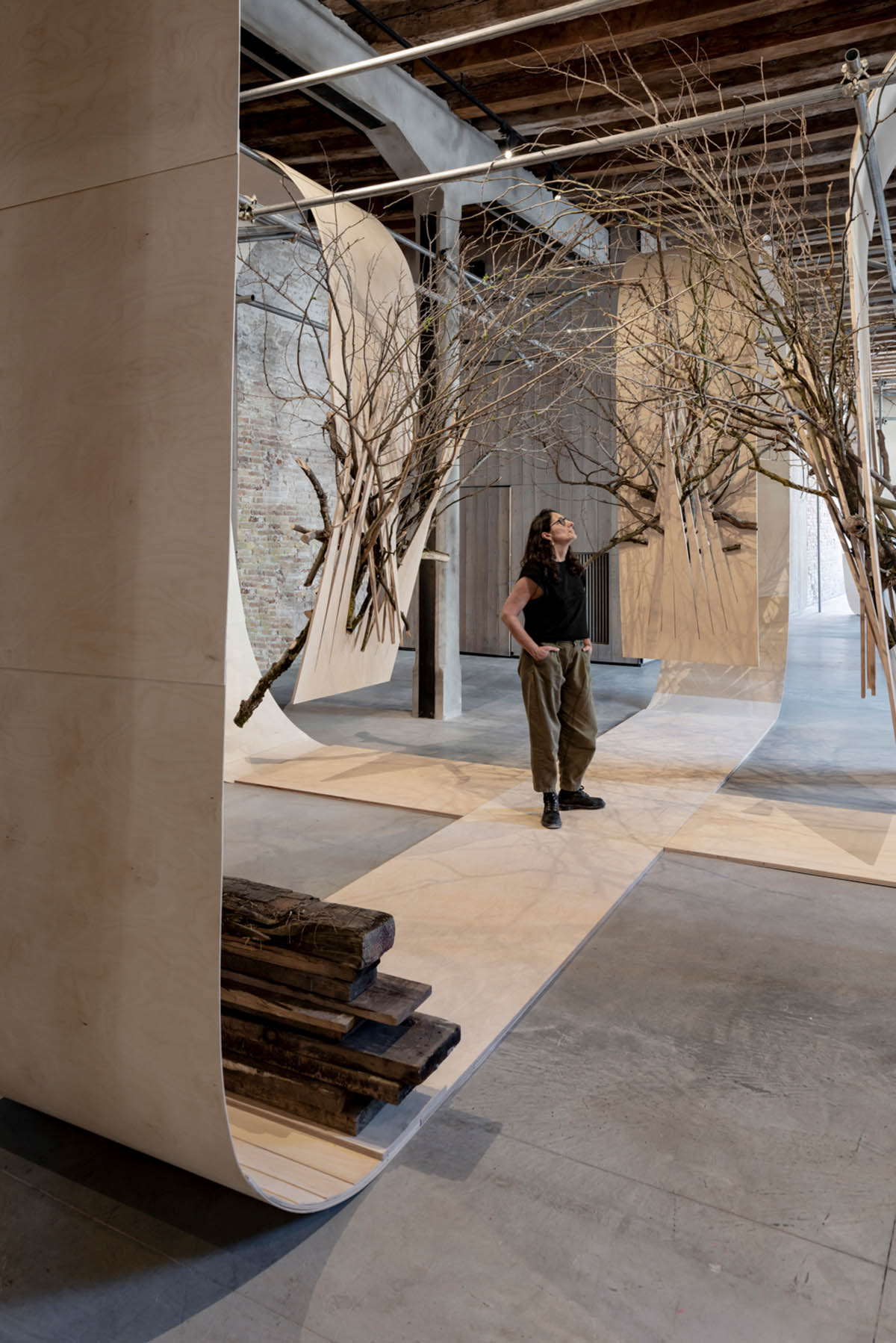
Also, I’m interested in how body-machine relationships generate a mixture in the perception of the consistency of that wood; it will no longer be either hard or soft, but both things at the same time: how a tool perceives a material is completely different from ours. If I consider a board of wood too hard to split with my own strength, a machine will instead perceive it as extremely soft and will be able to cut it in a matter of seconds.
How did you experience the opening weekend?
LL: It was amazing! I received good comments and very interesting visits.
How many people were involved in the entire process of creating the installation?
SD: It took a big team to produce the work, and though the number may seem small compared to other countries, for us it was a huge effort because our budgets are also smaller. We had a team of about nine people working in Venice, all from Argentina, plus a whole team that worked in Buenos Aires during the pre-production period and supported the project in multiple ways, from lightning to graphic design and fundraising. In total, about twenty people were working on different aspects of the project.
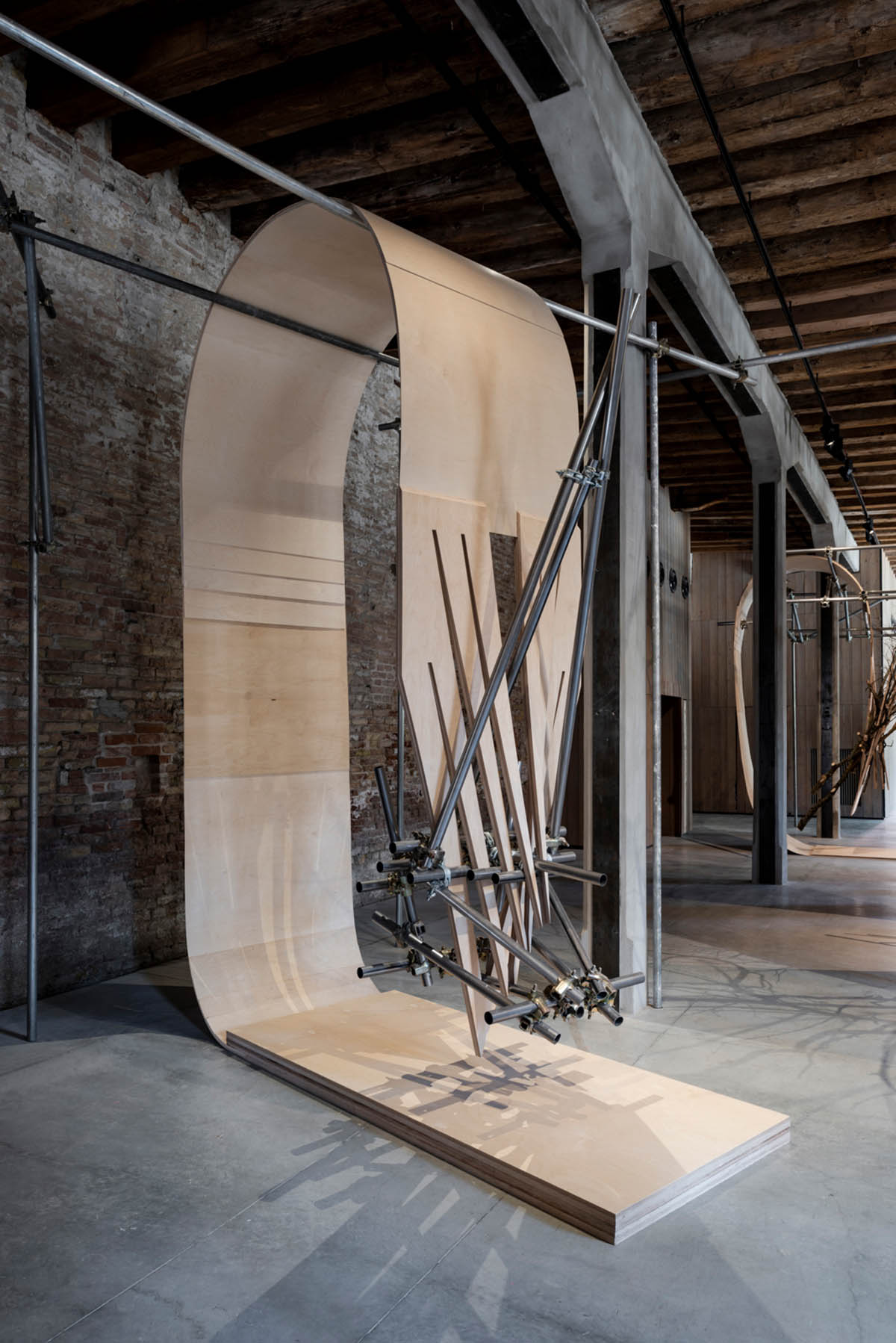
What are your thoughts on the relationship between the sculptures and their surroundings within the pavilion space?
SD: The work was conceived for that space, so there’s a very intimate relationship between the sculptures and the pavilion. The sculptures enter into a conversation with the architecture of the space by responding to some of its elements, like the columns, windows, and arches, but it also creates a tension that disrupts that conversation. The work itself, by using basic construction materials and techniques in a subversive way outside of the modern norm, is questioning how architecture and infrastructure determine how we inhabit built environments and the way these environments regulate how we relate to each other and the material world.
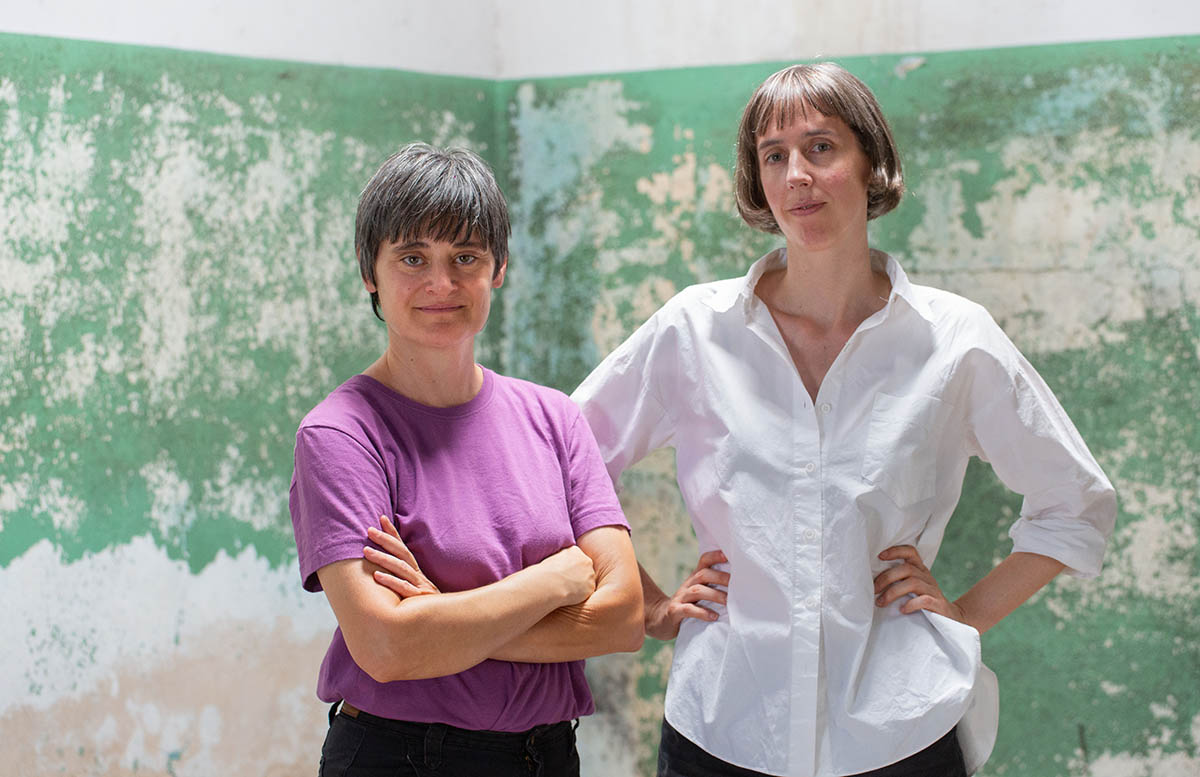
Were you able to enjoy your time in Venice as well?
SD: Yes, we were very focused on the task at hand; however, we managed to enjoy the city during the month we spent there. I guess there was enjoyment in the everyday use of the city, which is so special and beautiful, more than in a tourist way, going to a nearby bar for a spritz after a day of hard work, or sitting with locals to have coffee. That is the way I enjoy getting to know a new city the most; I’m a terrible tourist.
Are there any special events planned in conjunction with the Biennale Arte 2024?
SD: Not for now, but maybe something will come up in the upcoming months. We are planning a book launch in Buenos Aires, hopefully soon after everyone takes a much-deserved break.
Exhibition: Luciana Lamothe – Hope the Doors Collapse
Duration: 20th April – 24th November 2024
Argentina Pavilion Location: Venetian Arsenale, 30122 Venezia VE, Italy
Luciana Lamothe – www.lucianalamothe.com, www.instagram.com/lucianalamothe/
Sofia Dourron – www.sofiadourron.com, www.instagram.com/sofia.dourron/




